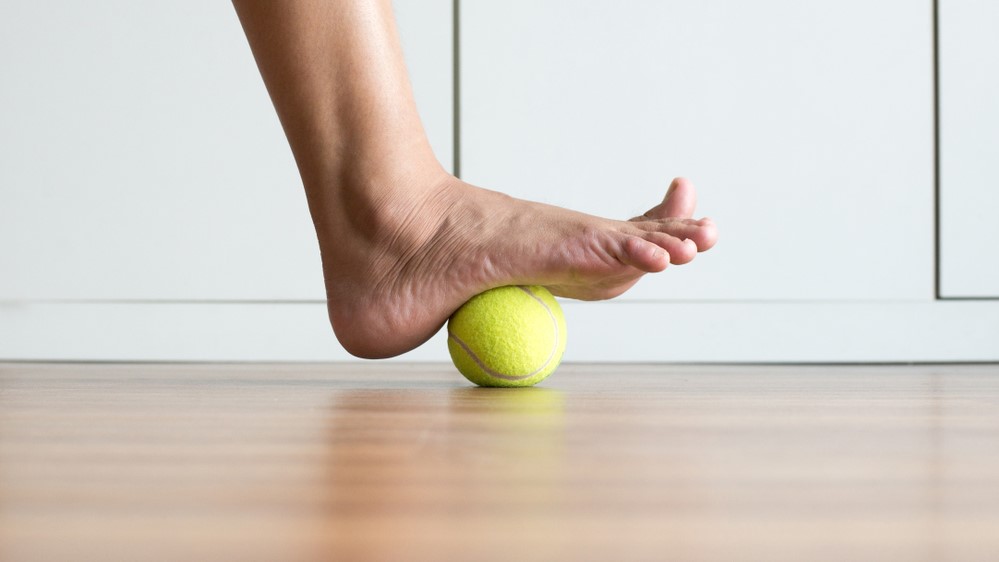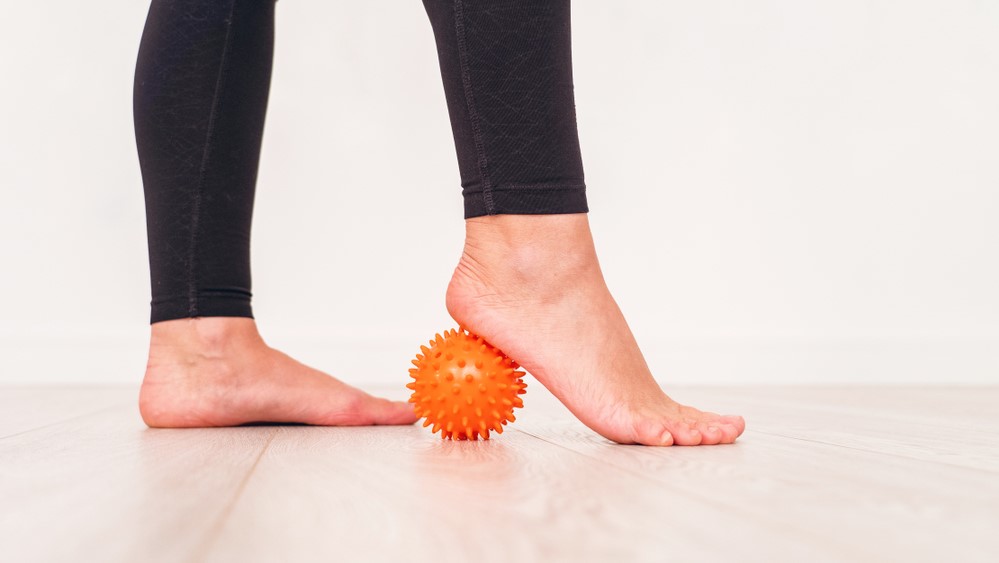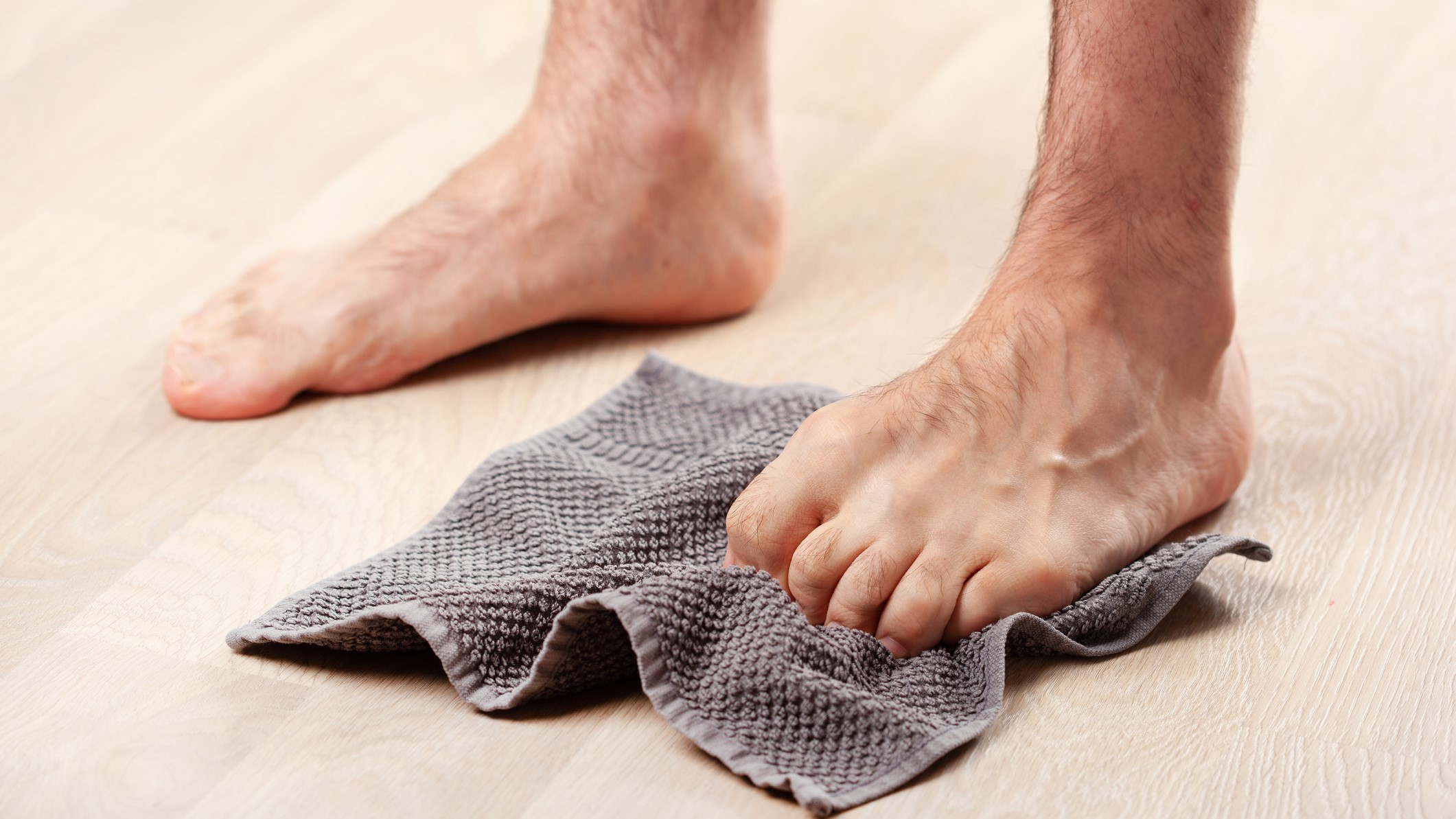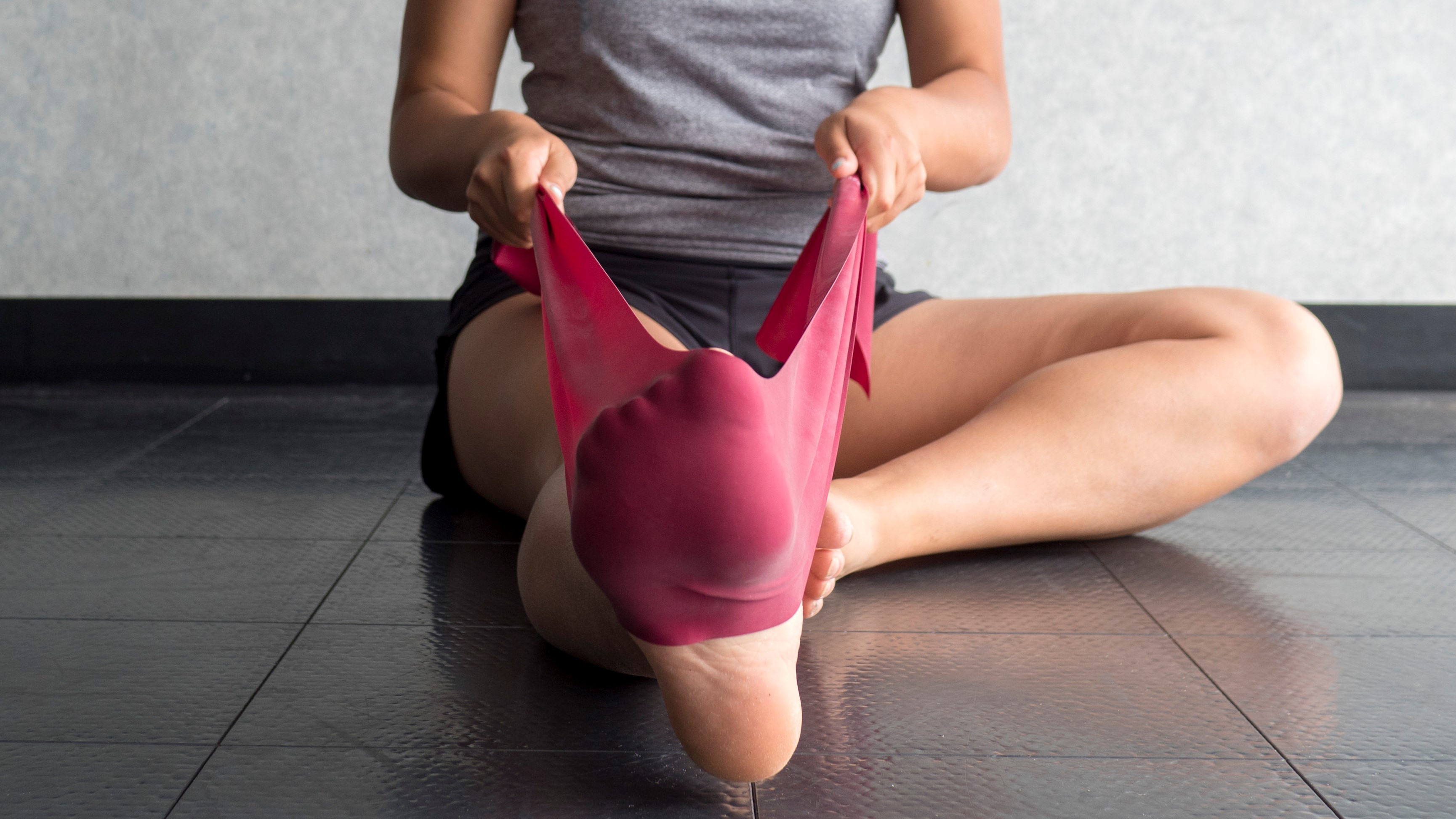Best exercises for plantar fasciitis — here's what a personal trainer told us
Here are the best exercises for pain relief

It’s a problem that many of us face — one moment you are walking around with no issues and the next it hurts like hell to put any pressure on the soles of your feet.
Plantar fasciitis is relatively common, affecting around one in 10 adults, both athletes, and non-athletes alike. The condition is an inflammation of the plantar fascia, a strong band of tissue that connects your heel bones to your toes. If you’re suffering from plantar fasciitis, it may be worse in the morning, particularly around the arches of your feet or at your heel.
Thankfully, there are some simple ways to speed up recovery and ease the pain. By following a series of exercises you should be able to walk, jump and run again without pain. All the exercises outlined below can easily be done at home without any fancy equipment — all you need is a small, hard, ball and a towel.
Personal trainer, Sam Jolly, has first-hand experience of plantar fasciitis which started when he began half marathon training. "Originally I got some orthotic insoles to cushion my feet as I walked and ran, but it was the exercises that I did three times a day that really helped me and spurred on my recovery," says Jolly.
What are the best exercises for plantar fasciitis?
As a personal trainer and running coach, Jolly has also supported many clients with plantar fasciitis. Here are Jolly's recommendations for exercises to tackle plantar fasciitis. Of course, if you are in serious pain, or the pain gets worse, it’s worth talking to your doctor, or physical therapist, before proceeding with any of the exercises below.

1. Rolling the foot
Firstly, you’ll need a small massage ball or trigger point ball, but a golf ball will do if you have one.
Sit upright in a chair and place your bare foot on the ball. Roll the ball around the arch of your foot both clockwise and anti-clockwise. Apply a fair amount of pressure to really knead into in the arch, which will reduce the tightness in the plantar fascia.
Sign up to get the BEST of Tom's Guide direct to your inbox.
Get instant access to breaking news, the hottest reviews, great deals and helpful tips.
Do 10 rotations in one direction followed by 10 rotations in the other direction three to five times.
2. Alternate toe raises
Next, while seated, spread your bare feet on the floor and alternately raise your big toe and then your four other toes. This will take a little bit of practice and patience, but once mastered it’s incredibly effective.
By raising up your big toe and other toes separately you are working all the fine muscles within your feet and not relying on the bigger muscles that carry out main movements. Incorporating these fine motor movements recruits more motor neurons into your feet and allows for greater range of motion in your exercises.

3. Towel curls
Remaining seated upright on a chair, lie a towel flat in front of you. Working from one end to the other, tuck your toes in and scrunch up the towel, move your foot up slightly and keep repeating until there is no towel left.
Straighten the towel out and repeat another two times. The constant contracting and relaxing of your plantar fascia gets it working in a way that it’s not used to, strengthening it much faster than simply resting it or applying ice to it.
Combine all these three exercises together into a routine and do them three times a day. Within a week there will be a noticeable difference in the way your feet feel.

4. Plantar flexion stretch
Regular stretching of the plantar fascia will help, too, and this is a great stretch you can include in your treatment. Place your bare foot against a surface with a slight jutting edge like a skirting board. Rest your toes on the edge and place your heel (dorsi flexion) on the floor then push your weight down so you are stretching through the bottom of your feet (plantar flexion). Hold this stretch for 20 seconds and repeat three times.
You can also practice the stretch using a resistance band (take a look at the best resistance bands on the market here). To do this, start by sitting with your legs outstretched and loop a long resistance band around one foot. Keep your toes flexed up, and hold the ends of the band in your hands. Slowly press your foot into a point against the band's resistance, then return to your starting position. Do 20 reps on each foot.
Although plantar fasciitis is quite common, these simple exercises and stretches will ensure you can take care of your sore soles.
Looking for more stretching exercises to add to your routine? Take a look at the best stretches for tight hip flexors, the lower back stretch to add to your routine to help with lower back pain, and the best exercises to try to strengthen your lower back muscles.
Lily Canter is a freelance money, health and lifestyle journalist with more than 20 years' experience. She writes about fitness for Runner's World and Trail Running magazines and focuses on personal finance for Yahoo! Finance UK, Metro, The Guardian, and the Mail on Sunday. In her spare time she is an ultra-runner, canicrosser and running coach. She also co-hosts the award-winning podcast Freelancing for Journalists.

